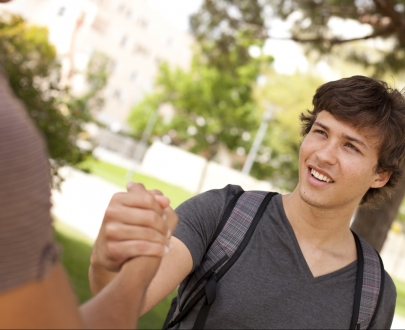 Gratitude is linked with many physical, social and emotional benefits[1] and is an important skill to foster with children and youth. When choosing an action to do so, however, research indicates that if the activity is forced or feels like homework it isn’t a good match. The outcome isn’t authentic and the results fall short of the potential benefits that experiencing gratitude offers. The most effective gratitude activities[2] are ones that engage children’s interests and strengths.
Gratitude is linked with many physical, social and emotional benefits[1] and is an important skill to foster with children and youth. When choosing an action to do so, however, research indicates that if the activity is forced or feels like homework it isn’t a good match. The outcome isn’t authentic and the results fall short of the potential benefits that experiencing gratitude offers. The most effective gratitude activities[2] are ones that engage children’s interests and strengths.
Be inspired by the following eight activities which have been collected from research and promoted by gratitude thought-leaders[3]. Use them to find a match for the children that you care about.
-
Discover and Use Strengths
Help children find what matters to them and activities that make them feel strong and engaged. Use these strengths as a basis for gratitude activities. Children will feel good about helping/entertaining/connecting with others when the activity aligns with what makes them feel good about themselves.
-
Gratitude photo or art projects
Be inspired by this lesson plan idea to encourage children (and yourself) to identify and visually express things they are grateful for. A powerful finale for this project is to gather the photos/art into a book, slide show or collage.
-
Three Good Things
This activity[4] has been shown in research studies to cultivate feelings of well-being. The studies describe “good things” as events or interactions that "went well". Identifying and talking about “3 good things” can be done a variety of ways. Take turns sharing around the dinner table, write down 3 good things at the start of a week, contribute 3 good things to a gratitude jar or enter 3 good things in an app. Adapt this activity to fit your situation.
-
Make a Paper Chain of Gratitude
On slips of construction paper, write down (or have students write) the things they are grateful for. Staple them together in interlocking loops to connect them together. The chain could be done with a classroom, a school or be individual chains that comprise the many things a child is grateful for.
-
Gratitude Circle
This group activity takes place sitting in a circle. Each student takes a turn sharing what they are grateful for.
-
Host a Gratitude Party
Go beyond saying “thank you” and invite people to your classroom or home to honour and celebrate them. Expressing gratitude directly to people has been shown to enhance and spread the benefits. In the school setting, results have indicated an increase in positive feelings[5] towards school.
-
Group Dialogue about Gratitude
Use quotes and questions to inspire a gratitude focused conversation. One study showed that educating children about “benefit appraisals[6]” among 8-11 year olds was linked to a greater capacity to understand emotions and take the perspective of others.
-
Gratitude Writing - Journals & Letters
Used sporadically this can be an effective activity for children and youth who enjoy journaling. The research suggests, however, that both forcing this activity and doing it too much (e.g. daily) will negate the benefits. Writing letters to someone expressing gratitude, on the other hand, is an alternate approach that gives children and youth more choice in the activity. Try Thnx4 online, shareable 3 week gratitude journal created by the Greater Good Science Center.
Benefits of gratitude, according to researchers Kristin Layous and Sonja Lyubomirsky (2014), include;
- increased feelings of well-being
- reduced depression
- less substance misuse
- fewer aggressive behaviours
- lower other risk factors for mental disorders
- more prosocial behaiours
- more positive relationships
- increase acceptance among peers
- improved school satisfaction
"...people who practice activities best-suited to their interests, goals, and resources will show the biggest improvements in wellbeing" is the stance of researchers from University of California, Riverside in a theoretical and emperical review of the mechanisms that explain how positive activities promote well-being.
Learn about the contributions of these and other scientists through the Greater Good Science Center at the University of Calfornia, Berkely.
Robert Emmons
Kristin Layous
Jeffrey Froh
Sonja Lyubormirsky
Kim Schonert-Reichl
Martin Seligman
Sara Algoe
In a study that had adolescent students either count their blessings or count their hassles, results showed that “experiencing and expressing gratitude comprise a simple way to counter negative appraisals of school and increase school bonding and social adjustment."
A benefit appraisal is the examination of the cost experienced by benefactors when giving and the benefits of receiving a gift. This can be done in schools with the following considerations;
-
children as young as 8 can be taught to think more gratefully using brief lessons delivered in the classroom
-
increases in gratitude were linked to increases in “thanking” behaviour
-
increases in gratitude is linked with higher well-being reported up to 20 weeks later